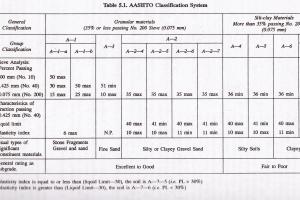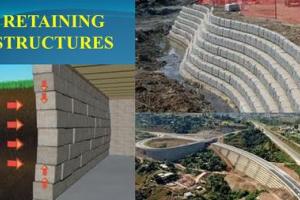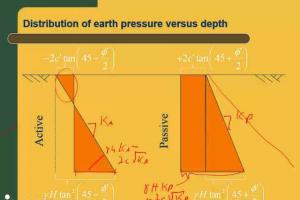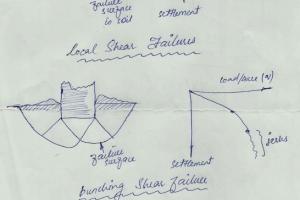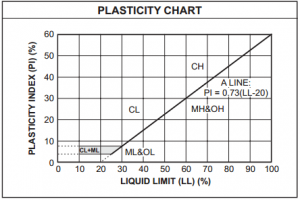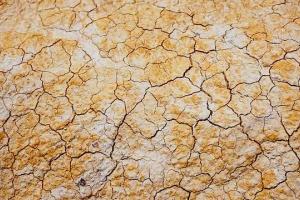Physical Properties of Soil
1. Voids ratio & Porosity
Using volumes is not very convenient in most calculations. An alternative measure that is used is the voids ratio, e. This is defined as the ratio of the volume of voids, Vv to the volume of solids, Vs, that is A related quantity is the porosity, n, which is defined as ratio of the volume of voids to the total volume.
2. Degree of saturation
The degree of saturation, S, has an important influence on the soil behavior. It is defined as the ratio of the volume of water to the volume of voids.
3. Air content
4. Water content:
The moisture content, m, is a very useful quantity because it is simple to measure. It is defined as the ratio of the weight of water to the weight of solid material. The water content (also known as moisture content) test is probably the most common and simplest type of laboratory test. This test can be performed on disturbed or undisturbed soil specimens. The water content test consists of determining the mass of the wet soil specimen and then drying the soil in an oven overnight (12 to 16 hr) at a temperature of 110 °C (ASTM D 2216-92, 1998). The water content (w) of a soil is defined as the mass of water in the soil (Mw) divided by the dry mass of the soil (Ms), expressed as a percentage (i.e., w _ 100 Mw/Ms).
Values of water content (w) can vary from essentially 0% up to 1200%. A water content of 0% indicates a dry soil. An example of a dry soil would be near-surface rubble, gravel, or clean sand located in a hot and dry climate. Soil having the highest water content is organic soil, such as fibrous peat, which has been reported to have water content as high as 1200%.
5. Unit weight:
Several unit weights are used in Soil Mechanics. These are the bulk, saturated, dry, and submerged unit weights. The bulk unit weight is simply defined as the weight per unit volume.
6. Bulk unit weight of soil:
The weight of the aggregate that fills a 1-cubic-foot container. This term is used because the volume contains both aggregate and voids air spaces. The total unit weight (also known as the wet unit weight) should only be obtained from undisturbed soil specimens, such as those extruded from Shelby tubes or on undisturbed block samples obtained from test pits and trenches. The first step in the laboratory testing is to determine the wet density, defined as _t _ M/V, where M _ total mass of the soil, which is the sum of the mass of water (Mw) and mass of solids (Ms), and V _ total volume of the soil
Unit weight of soil solids
Dry unit weight
Saturated unit weight
Saturated unit weight (γsat) is the saturated weight of soil per unit volume. A saturated soil has a degree of saturation (S) equal to 100%. The saturated unit weight is usually expressed as kN/m3.
Submerged unit weight
Buoyant unit weight or submerged unit weight is the effective mass per unit volume when the soil is submerged below standing water or below the ground water table.
Specific gravity:
The specific gravity (G) is a dimensionless parameter that is defined as the density of solids (_s) divided by the density of water (_w), or G _ _s / _w. The density of solids (_s) is defined as the mass of solids (Ms) divided by the volume of solids (Vs). The density of water (_w) is equal to 1 g/cm3 (or 1 Mg/m3) and 62.4 pcf. For soil, the specific gravity is obtained by measuring the dry mass of the soil and then using a pycnometer to obtain the volume of the soil. Because quartz is the most abundant type of soil mineral, the specific gravity for inorganic soil is often assumed to be 2.65. For clays, the specific gravity is often assumed to be 2.70 because common clay particles, such as montmorillonite and illite, have slightly higher specific gravity value.
Mass specific gravity
It is the ratio of the mass of a substance to the mass of a reference substance for the same given volume.



